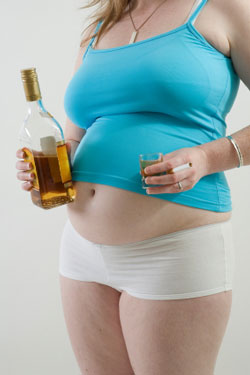Clone of Alcohol during pregnancy
As of the 23rd May 2022 this website is archived and will receive no further updates.
understandinguncertainty.org was produced by the Winton programme for the public understanding of risk based in the Statistical Laboratory in the University of Cambridge. The aim was to help improve the way that uncertainty and risk are discussed in society, and show how probability and statistics can be both useful and entertaining.
Many of the animations were produced using Flash and will no longer work.
What should be the official advice for women about the consumption of alcohol during pregnancy?
![]() On 11th October 2007 several news sources reported on the revised guidelines on antenatal care to be published by NICE (National Institute for Health and Clinical Excellence) in March 2008. These guidelines were reported to advise that there is “no consistent evidence of adverse effects from low-to-moderate alcohol during pregnancy (less than one drink or 1.5 units per day) but the evidence is probably not strong enough to rule out any risk.”
On 11th October 2007 several news sources reported on the revised guidelines on antenatal care to be published by NICE (National Institute for Health and Clinical Excellence) in March 2008. These guidelines were reported to advise that there is “no consistent evidence of adverse effects from low-to-moderate alcohol during pregnancy (less than one drink or 1.5 units per day) but the evidence is probably not strong enough to rule out any risk.”
(NICE spokesman quoted by bbc.co.uk. This advice is broadly similar to the previous (2003) guidelines on antenatal care by NICE, which suggests that “[i]f you do drink while you are pregnant, it is better to limit yourself to one standard unit of alcohol a day (roughly the equivalent of a small glass of wine, a half pint of beer, cider or lager, or a single measure of spirits)”.
This recommendation became a news story primarily because it contradicted advice issued by the Department of Health a couple of months previously (the Pregnancy Book, published 24 May 2007 ), that pregnant women should avoid all alcohol, on the grounds that, since there is no generally accepted safe limit, the safest course of action would be not to drink any alcohol at all.
See other pages for summaries of the issues involved and the development of the story in the media.
Commentary
The newspaper reports and subsequent discussion on this official advice is interesting for several reasons. First, we have two government agencies issuing apparently contradictory advice, which is naturally enticing to journalists. Second, the discussion moved away from evaluating the scientific evidence that formed (or should have formed) the assessment of the risk involved. Because the evidence is fairly inconclusive, the difference between the two sets of advice depends on different social priorities, rather than conclusions based on the scientific evidence.
One argument is the moral view which argues that alcohol is at best a dispensable pleasure, and at worst a sin, and that pregnant women who drink endanger their future children for the sake of their own pleasure. Added to this view is the precautionary principle: while we don't know what the precise safe limits for alcohol consumption really are, it is safer to abstain completely rather than face any risk at all, even if there is currently no evidence that small amounts of alcohol are at all harmful. Whatever the value of the evidence, no alcohol definitely means no risk to the child.

safer to abstain?
Conversely, there is the argument against the precautionary principle itself. People may question whether the blanket abstinence campaign will reach those women who are most at risk – it is argued that the abstinence advice is going to be followed mainly by people who already drink cautiously, rather than those who really need to restrict their alcohol intake. The precise mechanisms at work about how the abstinence advice works is a matter of social science research, and is independent of the underlying scientific evidence of the original matter. Even so, there is still the argument that, in the absence of evidence, the complete abstinence advice is patronising to women as it is saying, in effect, that they cannot control themselves. The argument is even made that the abstinence advice derives from a moral, rather than scientific position, and that therefore the drink issue is not about risking the health of the unborn child, but about drinking in general.
And there are other issues. Firstly, the moral and emotional impact any reported risk to children has compared with a risk that only affects adults. Secondly, the fact that the possible victim has no choice in the matter, which makes a risk much less acceptable than a risk that the potential victim chooses for him or herself. Then, exactly what do we aim to achieve with this advice? If it is part of a larger campaign against alcohol, for example, then the complete abstinence advice is more likely to be made because it ties in with the larger set of aims.
All of these arguments are worth having, and they are all valid social concerns that need to be addressed even if they are not necessarily as strongly influenced by the scientific evidence as the media representation suggests. The scientific evidence can merely shift the emphasis of the debate – the stronger the evidence of harm to the unborn child with even low level alcohol consumption, the more the debate will shift towards advising abstinence. However, how strong the evidence has to be for a particular piece of advice to be “right” is, as we hope this episode shows, still unclear.
